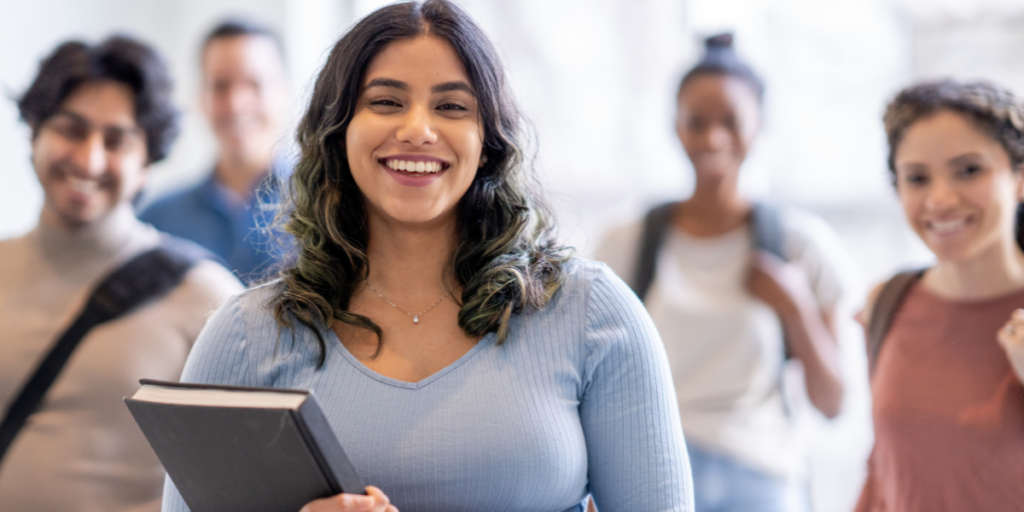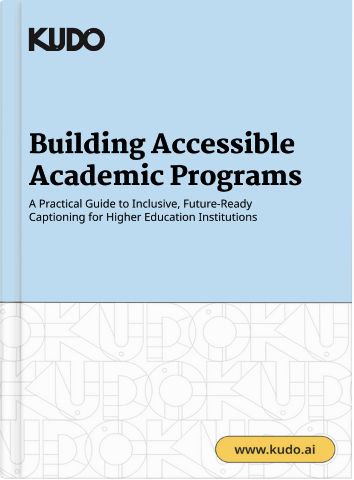Higher education in the United States is a cornerstone for personal growth and professional advancement. For students who are English learners (ELs) or those with disabilities, however, access to equitable education can sometimes feel like an uphill battle. Institutions must meet the needs of these students to comply with federal laws while fostering an inclusive learning environment. The U.S. Department of Education’s Office for Civil Rights (OCR) recently highlighted the intersection of language accessibility and disability rights in their publication ‘Meeting the Needs of English Learners and Students with Disabilities in Higher Education’.
This document underscores the responsibilities of colleges and universities to provide necessary accommodations under key federal laws. In light of these mandates, having live speech translation and captioning solutions is not just a matter of compliance—it’s a critical step toward breaking language barriers and empowering all students to thrive.

Language Accessibility in Higher Education: The Legal Landscape
Federal laws, including Title VI of the Civil Rights Act of 1964 and Section 504 of the Rehabilitation Act of 1973, ensure that institutions receiving federal funding must provide equal access to education for students with limited English proficiency (LEP) and those with disabilities. These laws require higher education institutions to:
- Provide effective language assistance services to LEP students, such as translation and interpretation, to ensure meaningful access to programs and activities.
- Accommodate students with disabilities, including offering aids such as real-time captioning and assistive technologies, ensuring they can participate fully in academic programs.
- Avoid discrimination on the basis of language or disability, ensuring every student has an equal opportunity to learn and succeed.
In today’s increasingly diverse educational landscape, failure to comply with these requirements can result in serious consequences, including federal investigations, loss of funding, and, most importantly, the marginalization of vulnerable student populations.
The Role of Live Speech Translation and Captioning
While institutions may understand the importance of language access, implementing effective solutions is often a logistical challenge. This is where specialized live speech translation and captioning platforms like KUDO come in. Here’s how they can help:
- Real-Time Accessibility Across Languages: Many classrooms are linguistically diverse, with students from around the globe. Live speech translation ensures that non-native English speakers can follow lectures, discussions, and events in their preferred language, breaking down barriers to understanding complex academic content.
- Equal Opportunities for Students with Disabilities: Real-time captioning enables students who are deaf or hard of hearing to fully participate in classroom settings. By combining speech recognition with AI-driven translations, solutions like KUDO ensure that no student is left behind, regardless of their abilities.
- Seamless Integration into Educational Environments: Unlike traditional interpretation services, KUDO’s scan-to-access, cloud-based platform is scalable, easy to integrate, and works across various devices. This makes it a cost-effective solution for institutions looking to meet federal requirements without overextending budgets.
- Legal Compliance Made Simple: Investing in live translation and captioning technology ensures institutions meet federal mandates. By being proactive, colleges and universities can also demonstrate their commitment to inclusion and avoid costly legal disputes.
Creating a More Inclusive Campus Experience Through Technology
As we’ve already covered, language and accessibility barriers can significantly hinder a student’s educational journey. On the flip side, when these barriers are removed, students are empowered to reach their full potential. Live speech translation and captioning don’t just meet compliance requirements—they actually enrich the academic experience, enabling:
- Greater Participation: Students can engage more actively in lectures, group discussions, and campus events.
- Improved Outcomes: With equitable access to course materials and academic conversations, students are more likely to succeed in their programs.
- Diverse Perspectives: By including students of all linguistic and ability backgrounds, institutions foster an environment of mutual learning and understanding.

Key Takeaways: A Call to Action for Higher Education Institutions
Language and accessibility should never be barriers to education. By leveraging live speech translation and captioning technology, higher education institutions can meet their legal obligations while creating an inclusive environment where every student feels valued and supported.
It’s not just about compliance—it’s about shaping the future of education to reflect the diversity and potential of its students. As the OCR Fact Sheet makes clear, now is the time for colleges and universities to prioritize accessibility, equity, and inclusion.

Get our white paper on ‘Building Accessible Academic Programs’
Discover how leading universities are meeting new accessibility requirements while boosting learning outcomes for all students. This comprehensive guide reveals the strategic advantages and implementation roadmap of AI-powered live captioning technology that goes far beyond compliance.